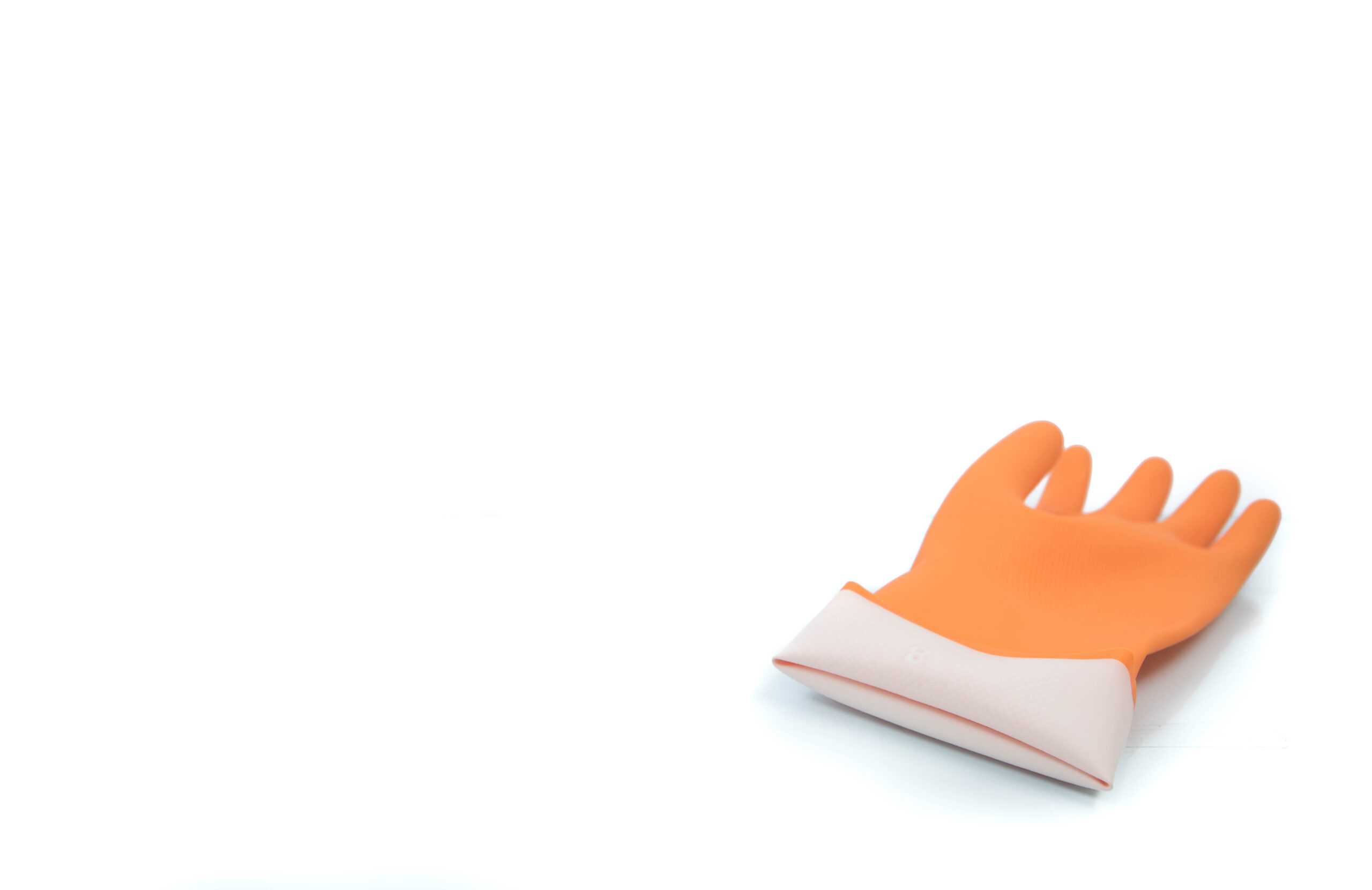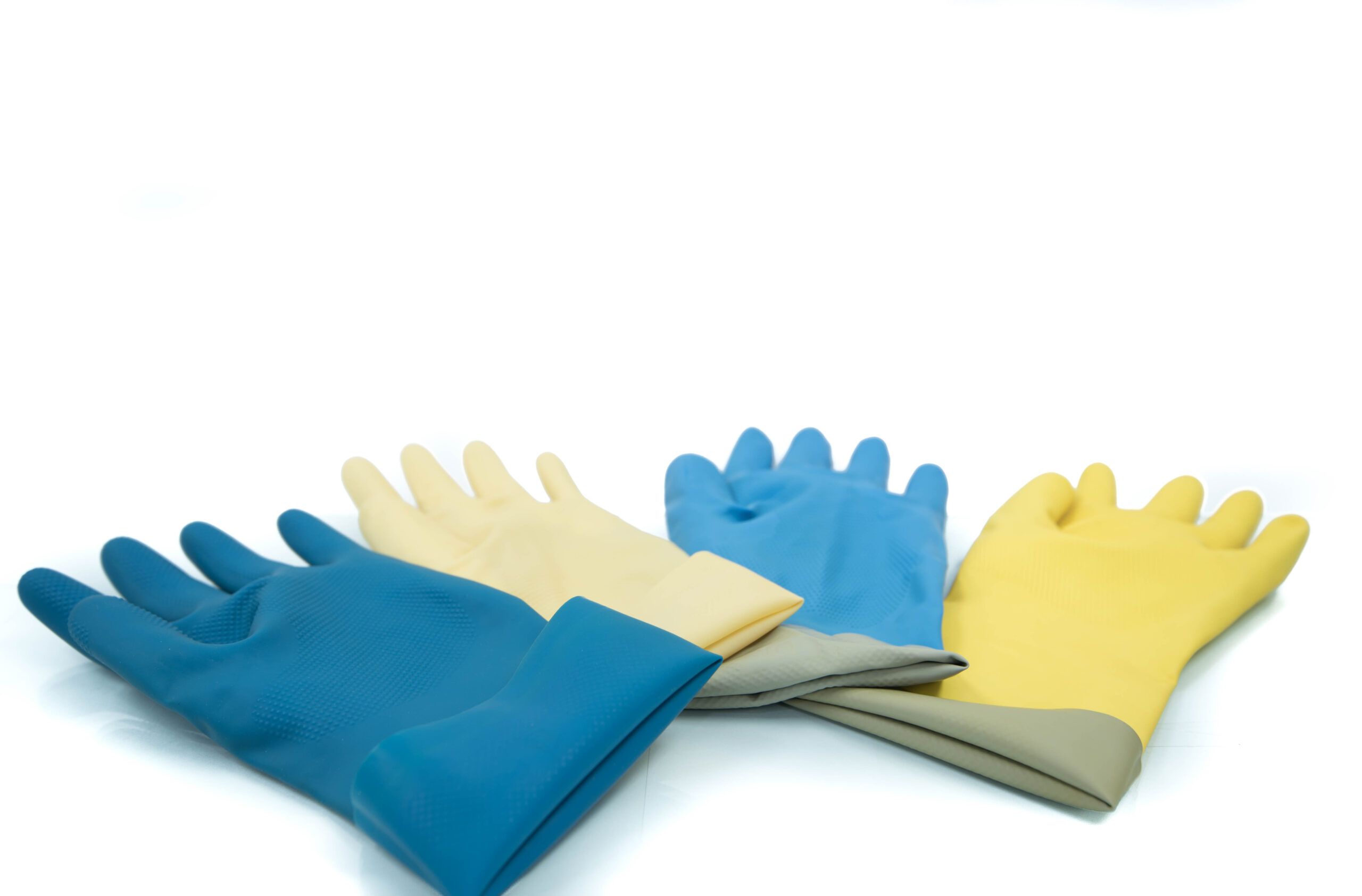When developing or sourcing a reusable glove line, choosing the right lining can make all the difference. Glove lining isn’t just about comfort—it plays a critical role in wearability, hygiene, durability, and worker compliance across industries.
From food processing to general manufacturing, the right inner surface can determine whether gloves are worn properly or discarded halfway through a shift. That’s why understanding glove linings isn’t just technical—it’s strategic.
Let’s take a closer look at two of the most widely used linings in reusable rubber gloves: cotton flocklined and unlined.
1. Flock Lining: The Perfect Balance of Comfort and Absorption

Cotton flocklining involves finely milled natural cotton fibers applied to the inside of the glove during production. The result is a soft, textured interior that feels pleasant against the skin and helps with moisture management.
Key Advantages:
Improved comfort: The cotton layer reduces friction and irritation, especially when gloves are worn for hours.
Sweat absorption: Helps wick moisture, minimizing that uncomfortable “clammy” feeling that often leads workers to remove their gloves prematurely.
Ease of donning and doffing: The textured interior makes the glove easier to put on and remove, even with damp hands.
Mild insulation: Offers a layer of warmth, making it suitable for cooler environments like cold storage or unheated warehouses.
Where It Fits:
Cotton flocklined gloves are ideal for industries where both protection and comfort are key—such as food processing, janitorial work, chemical handling (with compatible outer layers), and general industrial tasks. They’re particularly valuable in settings where gloves are worn continuously for long shifts.
2. Unlined Gloves

Unlined gloves have no interior lining, offering a direct layer of rubber contact inside. They’re streamlined, flexible, and typically thinner, which gives them their own set of advantages.
Key Advantages:
- Greater dexterity: No extra layers mean better tactile sensitivity and hand movement—important in tasks requiring precision.
- Faster drying and cleaning: With no inner absorbent layer, unlined gloves are easier to wash and dry between uses.
- Lower bulk: Their thinner profile makes them more comfortable for short-term tasks or industries requiring multiple glove changes daily.
- Cost-effective for high turnover: Ideal for industries where hygiene protocols demand frequent glove replacement, reducing wear-time per pair.
Where It Fits:
Unlined gloves are widely used in food service, laboratory environments, cleanroom applications, and some types of packaging or quality control. They’re also preferred in any setting where glove changes are frequent, and maximum touch sensitivity is required.
Why Lining Choice Matters in the OEM and PPE Retail Space
Glove lining is often an overlooked selling point—but for distributors and OEM brand owners, it can be a key differentiator.
- Better lining = better compliance: If gloves are more comfortable, workers are more likely to wear them consistently.
- Less waste: When gloves are worn properly and for longer, customers get better value from every unit sold.
- Market segmentation: Offering different lining types allows you to target specific industries or buyer personas more effectively.
- End-user education: Explaining lining benefits can improve buyer satisfaction and reduce product returns due to mismatch.
For OEM partners, choosing the right lining is also a branding opportunity. Your glove shouldn’t just protect—it should be one that workers want to wear. Retailers can position each lining type for specific uses, creating an intuitive product portfolio that supports faster decision-making for customers.
Final Thoughts
As demand for durable, reusable PPE grows across sectors, so does the importance of every glove detail—especially what’s inside.
Cotton flocklined gloves offer comfort and sweat management for long hours and general protection. Unlined gloves deliver flexibility, quick use, and minimal bulk where needed. Both have a place in an optimized glove portfolio for today’s industries.
Understanding the technical function of linings—and how they align with end-user needs—helps you make smarter sourcing and branding decisions that deliver long-term value to your customers.
For more guidance on building a durable, well-positioned reusable glove line, our team at Nastah is ready to support. Reach us anytime at sales@nastah.com.my.





